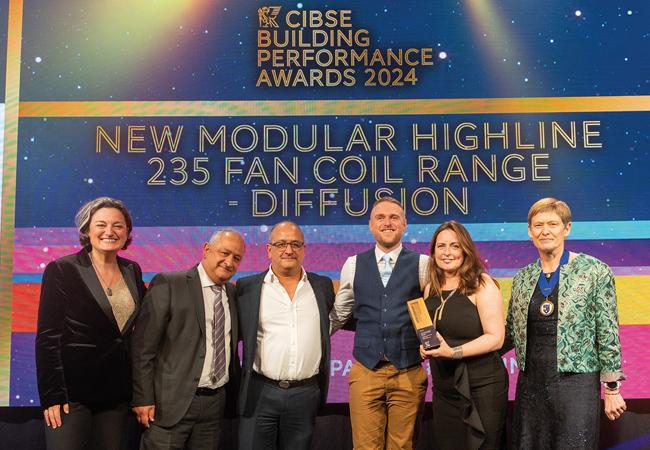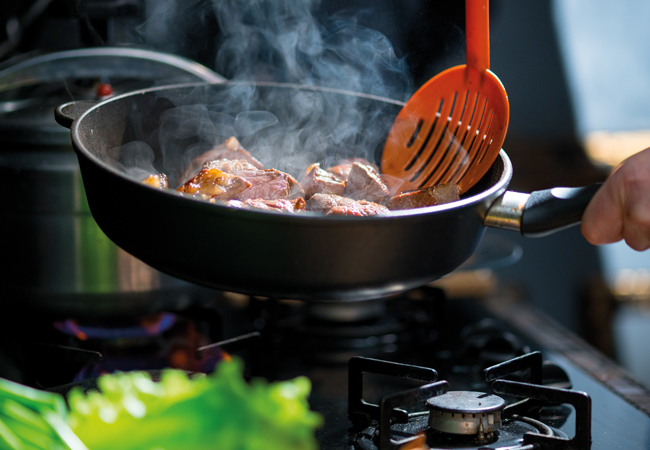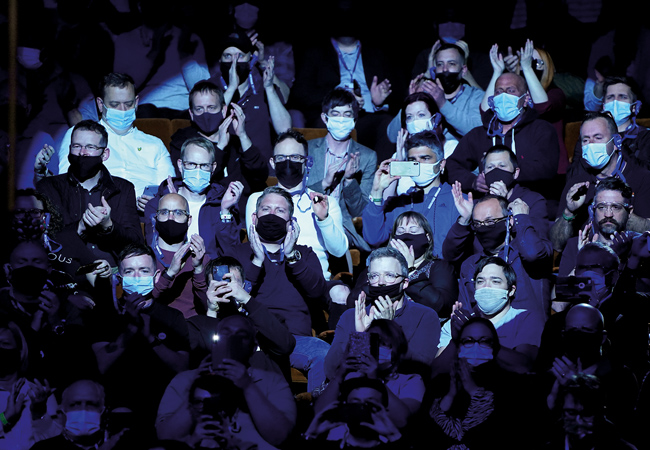
The winner of the CIBSE Learning and Development Award was pivotal in allowing the return of large-scale events in the UK amid the Covid-19 pandemic.
Led by Loughborough University, the ‘Airbods’ project is a collaboration of academic institutions and engineering research firm Wirth Research, and made a vital contribution to the government’s Events Research Programme (ERP), which evaluated the transmission risk at big events.
Standing for ‘Airborne Infection Reduction through Building Operation and Design for SARS-CoV-2’, the Airbods project’s high-resolution CO2 monitoring and modelling informed the government’s decision in July 2021 to resume the normal operation of large events in culture, music and sports industries while improving venue safety.
Praising the outcome of the Airbods project, the awards judges said: ‘The research has resulted in usable guidance and tools to help designers identify and mitigate infection control risk. It has enabled policy-makers and stakeholders to evaluate the changes in risk that modifications to ventilation rates, occupancy density, and exposure times have at a population scale, so that interventions can be better focused.’
Our work gave us the means of visualising what was going on… to show the impact of people breathing out moisture particles with virus on them in different scenarios
The Airbods project began in March 2021, when the government’s Engineering and Physical Sciences Research Council (EPSRC) issued a call for rapid responses for funding. Most of the participants in the Airbods project team had worked with each other before on ventilation and indoor air quality projects and publications, while a small number of the group had been meeting every week during the pandemic to discuss and share ideas about how they might respond to what had become a global pandemic with far-reaching economic and social impacts.
The team included specialists from academic institutions including University College London (UCL), University of Nottingham, University of Sheffield, University of Cambridge and London South Bank University.
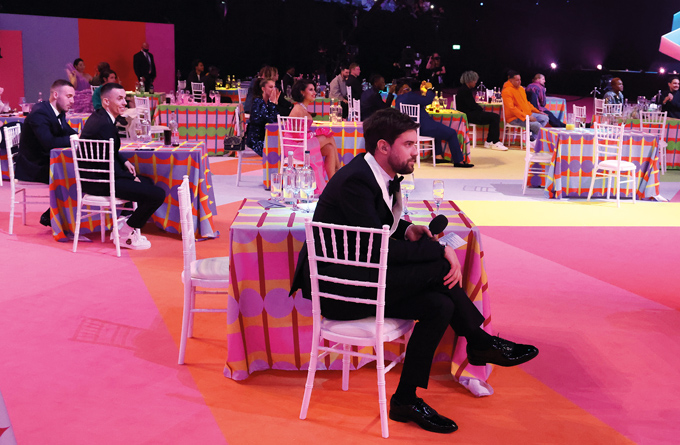
The Airbods project informed the government’s decision to resume the normal operation of large events in culture, music and sport
The Airbods team was asked to contribute to the ERP by carrying out the environmental study of a wide range of venues and events between April and July 2021. This part of the programme, led by the UCL team helped to build the evidence based on air quality and improved understanding of potential risks of airborne transmission, and their mitigations.
Malcolm Cook, Professor of Building Performance Analysis at Loughborough University, led the Airbods programme. ‘It has been a privilege to lead such a committed and experienced team,’ says Cook. ‘The collaboration across the project partners was highly focused from the start: it was exciting but very intense. The whole team worked exceptionally hard and the experience couldn’t have been better in terms of teamwork and commitment at a time when many people had personal challenges of their own. Our team of eager, early career researchers certainly got more than they bargained for when they willingly accepted the challenge to prepare hundreds of sensors and loggers for installation into some of the largest, most complex entertainment and sports venues in the UK!’
Working rapidly to develop evidence for the ERP, the University of Nottingham team developed analytical models to estimate the risk of SARS-CoV-2 long-range aerosol transmission indoors at both individual and population scales. A ‘relative exposure index’ estimated the relative inhaled doses in a comparator and reference scenario in the presence of an infected person.
The index was used as evidence by the UK Scientific Advisory Group for Emergencies (SAGE) Energy Modelling Group, and forms the basis of the CIBSE COVID-19 Relative Exposure Calculator released with CIBSE’s COVID-19: Air cleaning technologies documents. This tool enables building operators and consultants to assess the effectiveness of ventilation and air-cleaning interventions at reducing risks in their own particular scenarios.
An extension of Airbods work considered the population-scale effects of ventilation in indoor scenarios, enabling policy-makers to evaluate the changes in risk that modifications to ventilation rates, occupancy density, and exposure times have at a population scale. This allows potential interventions to be better focused.
Cook, who has been working in ventilation modelling and measurement for around 30 years, says that, prior to Covid-19, it had been difficult to engage people’s interest in the importance of indoor air quality. ‘Its invisibility means it is often overlooked,’ he said.
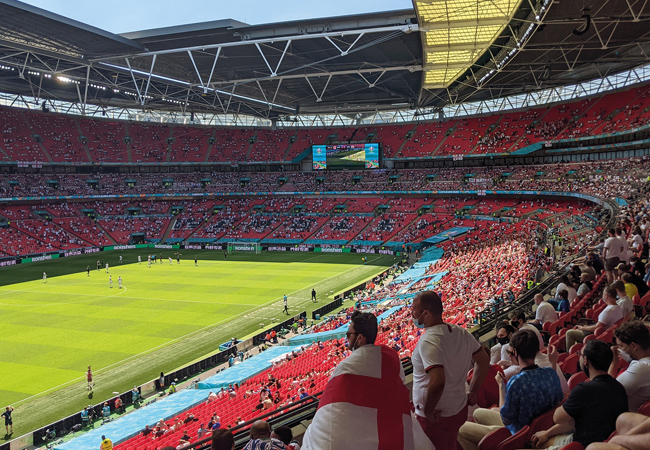
‘However, when the pandemic hit, everybody wanted to talk to us about how to improve their pubs, restaurants and other entertainment venues. Our computer simulation gave us the means of visualising what was going on and, for instance, creating graphics, animations and computer models that could show people the impact of people breathing out moisture particles with virus on them in different scenarios.’
The Airbods project’s initial phase was fast-moving, Cook says, which was itself a challenge. ‘Within two weeks, the team had completed risk assessments and secured ethical clearance as well as purchased and calibrated hundreds of sensors, and rolled them out into the field, while ensuring the computer interfaces were working as they should.’
Between April and July 2021 pilot events were monitored in indoor and outdoor settings, with variations of seated, standing, structured and unstructured audience styles, and a range of participant numbers.
These included the World Snooker Championships at the Crucible in Sheffield, The FA cup and the EURO2020 football events at Wembley Stadium, London, and the BRIT Awards at the O2 in London.
The team used wireless technology to encrypt, transmit, and cloud-store the data, measured by sensors sampling environmental variables at two-minute intervals. This enabled real-time data analysis, while the team used the live information to respond rapidly to any data disruption and to correct errors and malfunctions. The team also comprised specialist microbiologists who conducted simultaneous microbiological sampling to provide information on the types of areas and surfaces in which it is most likely to encounter bacterial contamination.
Key variables
When modelling the transmission risk in each location, it became clear to the Airbods team that the significant uncertainty in the values of key variables, such as the rate at which an infected person emits the virus and the dose-response relationship, meant that absolute estimates of long-range transmission risk were not useful for decision-making. Therefore, a relative-risk approach was used that cancelled the large uncertainties and enabled indoor scenarios to be compared against one another so that they could be ranked and targeted for interventions.
Where necessary, the Airbods team sought outside help from those with expertise in infectious diseases and the information enabled them to develop a novel population framework for predicting the proportion of people infected by the far-field airborne transmission of SARS-CoV-2 indoors.
Every week, the Airbods team would meet government bodies, the DCMS and BEIS to share results and discuss upcoming tests, while feeding their findings back into the next round of tests. ‘It was very fast moving, compared to typical academic research, but very exciting. We produced outputs in a very short period of time, reporting on each event as it happened. The final government report brought it all together, with our work undertaken alongside other organisations monitoring other aspects of the events, such as crowd dynamics and so on.’ Around 20 people from the Airbods team were involved in the research, with around 40 other participants.
Measuring CO2 as a surrogate for the virus revealed that many buildings aren’t ventilated well enough, Cook says. ‘One of the key findings was that if buildings were ventilated as they should be, then the risk of transmission was relatively low. The problem we found was that many buildings weren’t ventilated as intended and may not have taken into account occupancy patterns throughout the building.
CIBSE guidance is for airflow of around 12 L·s–1 per person – if that level of ventilation was present, then we may not have had the level of transmission that we suffered. The problems were because we had poorly ventilated, poorly operated, and poorly maintained spaces.’
Cook explains that building owners and operators didn’t always know how the ventilation system was intended to operate most effectively and, related to that, some systems were poorly maintained and weren’t delivering what the design intended. He says the team was surprised to find that transmission potential was found even at outdoor events. ‘At Wembley Stadium, for instance, we were finding high CO2 levels on the terraces as well as around the bar areas and toilet queues, indicating a risk.’
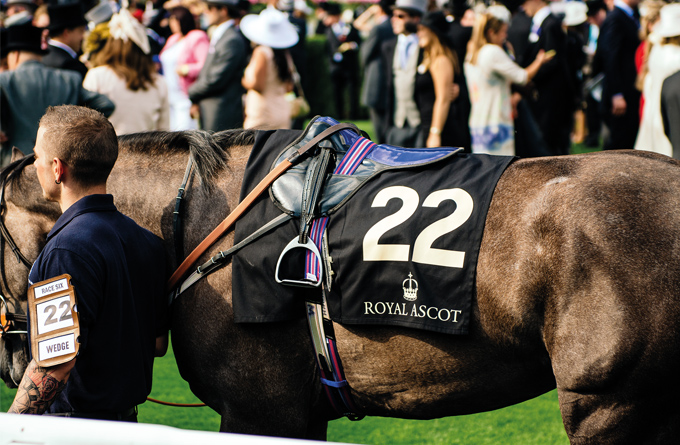
A series of pilot events were monitored, including Royal Ascot and major football events at Wembley Stadium, left
The main recommendations for reopening were, therefore, to limit capacity, maintain testing and physical spacing for the bar area indoors, and to reduce all ventilation recirculation of air to zero, using only fresh air ventilation. Cook acknowledges that post-pandemic, ‘Covid-fatigue’ has started to see general interest in the subject starting to wane, particularly with government moving on to other issues. However, he says: ‘I don’t think it will ever disappear from the minds of our engineering fraternity. Architects and building designers will remain interested in how they can make their buildings healthier for a long time.
‘Healthy buildings and wellbeing are still very much on the agenda, and it’s up to organisations such as CIBSE and its members to keep it there.’
The Airbods team is still active, and, as well as working on a number of papers on the research project for publication in academic journals and contributing to new guidance, it will be running events in conjunction with CIBSE.
The team is preparing a bid for more funding, broadening its scope to cover topics including wellbeing, intelligent buildings and energy consumption – looking at how safe environments can be provided in an energy efficient way. ‘The project will enable us to undertake more experiments and computer modelling to gain a deeper understanding of how air flows and interacts with people in buildings.’
Airbods’ contribution during Covid-19 is not only of academic interest – the intention is to help inform the future. ‘All the modelling and monitoring we’ve done have been geared to understand how we can do better in the next pandemic,’ Cook says.
‘Also, crucially, it’s about making buildings healthier – how can we better design, use and operate buildings to minimise absences due to viral infections.’
More findings and guidance on infection resilience: https://airbods.org.uk




